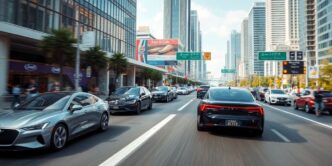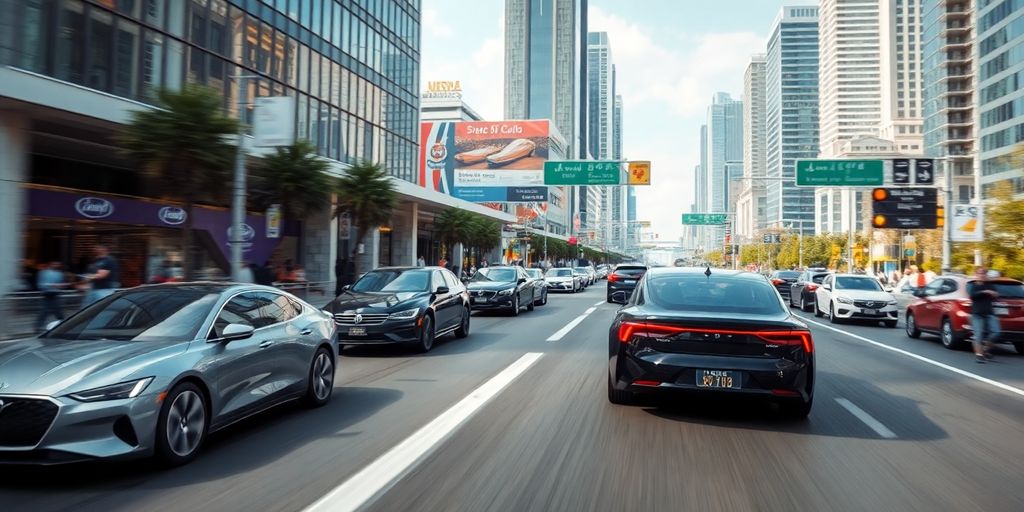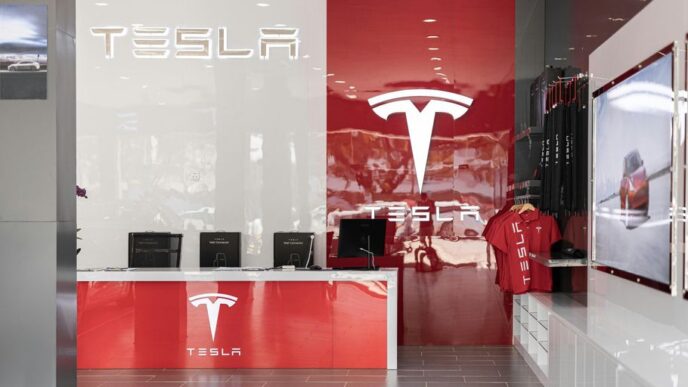British start-ups are at a crossroads as they strive to develop driverless vehicle technology amidst fierce competition from well-funded rivals in the US and China. Companies like Oxa and Wayve are making strategic decisions to adapt to the evolving landscape of autonomous vehicles (AVs).
Key Takeaways
- British start-ups face significant competition from US and Chinese companies.
- Legal restrictions and funding challenges hinder the deployment of fully autonomous vehicles in the UK.
- Oxa and Wayve are pivoting their strategies to focus on specific markets and applications.
The Current Landscape of Autonomous Vehicles
The journey towards fully autonomous vehicles has been fraught with challenges. While companies like Waymo and Baidu are successfully operating self-driving taxis in cities such as San Francisco and Wuhan, British start-ups are still navigating the complexities of legal and technological hurdles.
Oxa, an Oxford University spinout, recently demonstrated its self-driving Ford E-Transit passenger van, showcasing its advanced technology. However, the vehicle struggled with certain navigational challenges, highlighting the limitations of current AV systems. The van’s sensors, which include nine cameras and seven radars, were unable to recognize a smaller roundabout, necessitating human intervention.
Legal and Financial Hurdles
The UK has made strides in regulating autonomous vehicles, passing the Automated Vehicles Act last year. However, secondary legislation is still required to allow for the testing of AVs without drivers, which is crucial for the industry’s growth.
Financially, British start-ups are at a disadvantage compared to their US counterparts. Oxa has raised $225 million, while Wayve has secured $1.3 billion. In contrast, companies like Alphabet’s Waymo have invested significantly more, with estimates suggesting a total of $25 billion in funding.
Strategic Shifts in Approach
Faced with these challenges, Oxa and Wayve are reevaluating their strategies. Oxa aims to achieve level 4 autonomy, where vehicles can drive themselves in limited, pre-mapped areas. The company is now focusing on specific applications, such as operating shuttle buses in the US and providing AV software for logistics companies.
Gavin Jackson, Oxa’s CEO, emphasizes the importance of targeting uniform services where vehicles follow predictable routes. This approach narrows the market but presents a clear financial case for automation, particularly in environments like airports where repetitive tasks are common.
Wayve, on the other hand, is leveraging artificial intelligence to enable cars to drive by perception rather than relying solely on pre-built maps. This innovative approach allows for greater flexibility in navigating public roads, although the company is currently focusing on developing driver assistance software for car manufacturers.
The Road Ahead
As the UK’s autonomous vehicle sector continues to evolve, experts believe that the country’s intellectual capabilities can help bridge the gap with better-funded competitors. However, for British start-ups to thrive, they will need to carve out a niche in the market and secure additional funding.
The future of driverless vehicles in the UK remains uncertain, but with strategic pivots and a focus on specific applications, companies like Oxa and Wayve are positioning themselves to navigate the challenges ahead. The hope is that, with the right support and innovation, the UK can emerge as a leader in the autonomous vehicle space.
Sources
- British start-ups need a new road to driverless vehicles, Financial Times.














